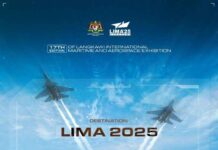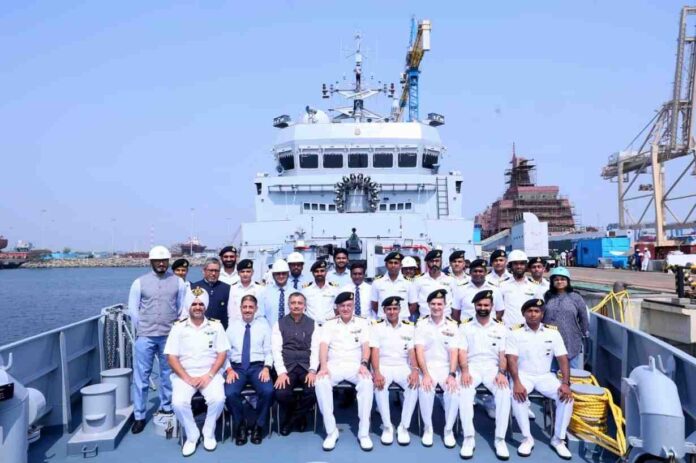MAY 08: In a significant boost to India’s coastal defence and indigenous shipbuilding initiative, the Indian Navy received delivery of the first Anti-Submarine Warfare Shallow Water Craft (ASW SWC), ‘Arnala’, on 8th May 2025. The warship was handed over at the L&T Shipyard in Kattupalli, marking the beginning of a new era in underwater warfare capability for the nation.
‘Arnala’ is the first of eight such ASW SWC vessels being developed under a strategic collaboration between Garden Reach Shipbuilders and Engineers (GRSE), Kolkata, and L&T Shipyard. The ship is a product of the Indian Navy’s strong focus on indigenous design and manufacturing, aligning with the Government’s ‘Aatmanirbhar Bharat’ vision. Notably, the project achieved over 80% indigenous content, demonstrating India’s growing self-reliance in defence production.
The 77-meter-long vessel, named after the historic coastal fort ‘Arnala’ near Vasai, Maharashtra, pays homage to India’s maritime legacy. It is the largest Indian Navy ship powered by a diesel engine-waterjet propulsion system. Designed in accordance with the Indian Register of Shipping (IRS) Classification Rules, the warship showcases the potential of the public-private partnership (PPP) model in defence manufacturing.
Arnala is built to perform critical naval functions such as underwater surveillance, low-intensity maritime operations (LIMO), advanced mine laying, and search-and-rescue missions in coastal waters. With its robust ASW capabilities, the ship significantly enhances the Indian Navy’s ability to detect and neutralize underwater threats in shallow waters.
The delivery of Arnala marks a major milestone in India’s maritime preparedness and further strengthens the Navy’s fleet with next-generation technologies. It is also a testament to the Navy’s strategic shift towards complete indigenization and collaborative shipbuilding models with private sector participation.
As India continues to modernize its naval forces, the induction of ASW SWCs like Arnala plays a pivotal role in safeguarding national interests across coastal and littoral zones. The remaining seven vessels under the project are expected to follow suit, each enhancing the Indian Navy’s agility, responsiveness, and underwater warfare readiness.


















